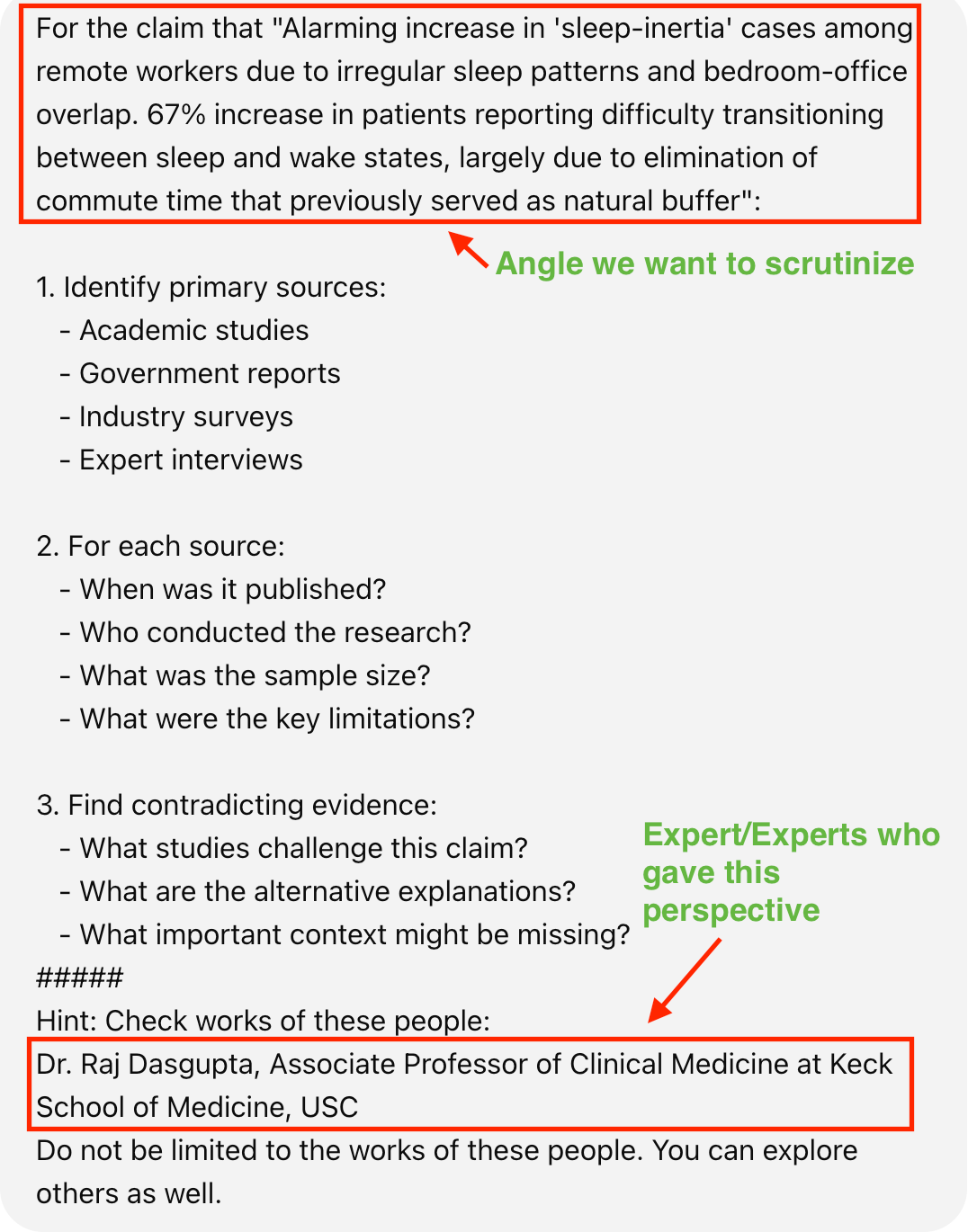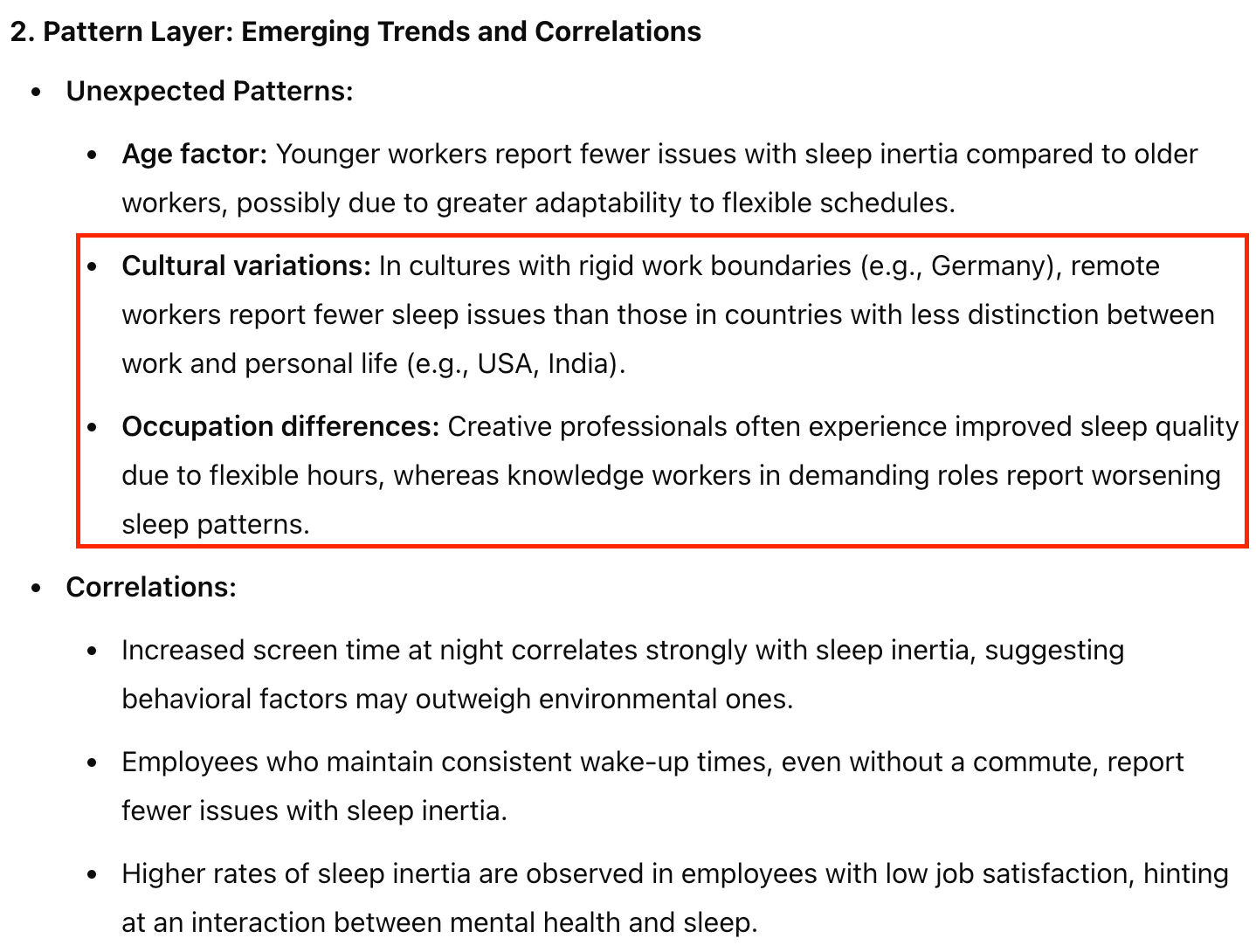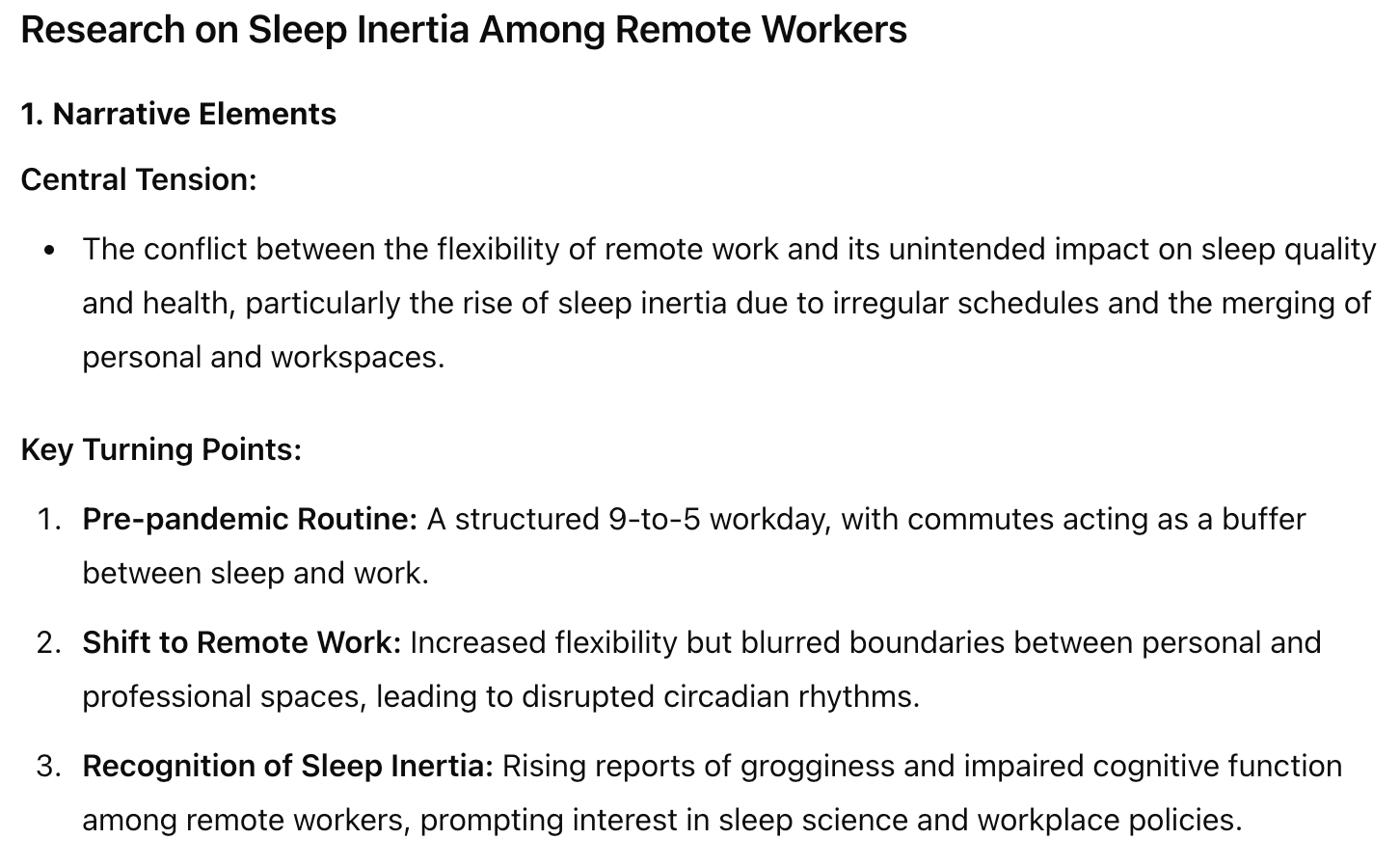The SCAN Framework: Publication-Quality Research with AI
A Systematic Framework for Validating, Deepening, and Structuring AI-Generated Research
Welcome to the depths, Deep Writers.
Last week, we used the Expert Interview Technique to uncover unique angles using AI experts.
We took the topic ‘the impact of remote work on employees’ and saw how to move beyond generic article ideas and find perspectives that truly stand out.
One of our AI experts gave us a very interesting angle:
But finding a compelling angle is just step one.
Most writers make a critical mistake here: they accept AI’s initial outputs as fact. This leads to shallow content that falls apart under editorial review.
Remember what we learned in the STAGE Framework? AI isn’t searching a database — it’s predicting the most likely next words.
In this edition, I’ll show you how to use the SCAN framework to transform the initial AI insights into deeply researched, publication-quality content.
The SCAN Framework: Your Research Quality Filter
We’ll use ChatGPT-4o as it has internet connectivity to refer the relevant research.
Use the same chat session throughout.
S - Source Verification
When you get an interesting angle from AI, start here.
Here’s your prompt.
For the claim that [PERSPECTIVE]:
1. Identify primary sources:
- Academic studies
- Government reports
- Industry surveys
- Expert interviews
2. For each source:
- When was it published?
- Who conducted the research?
- What was the sample size?
- What were the key limitations?
3. Find contradicting evidence:
- What studies challenge this claim?
- What are the alternative explanations?
- What important context might be missing?
#####
Hint: Check works of these people:
[Expert(s) who brought this perspective]
Do not be limited to the works of these people. You can explore others as well.Replace the [PERSPECTIVE] with the angle you’re exploring, and under Hint, provide the list of experts.
Few snippets of what GPT gave:
These seem promising and validate the angle.
C - Cross-Reference
Professional writers never rely on a single source. Here’s how to cross-reference effectively and find potential biases:
For the topic of [YOUR TOPIC]:
1. Compare findings across:
- Academic research
- Industry reports
- Expert opinions
- Real-world case studies
2. Identify:
- Points of agreement
- Areas of contradiction
- Gaps in research
- Potential biases
3. Create a synthesis:
- What's the consensus view?
- What's still debated?
- What questions remain unanswered?Results:
A - Analysis Deepening
This is where you move beyond what’s obvious to discover hidden patterns and connections. Think of it as creating value beyond what any single source provides.
For [YOUR TOPIC], explore these layers:
1. Surface Layer:
- What's the commonly accepted narrative?
- What do most people believe?
2. Pattern Layer:
- What unexpected patterns emerge?
- What correlations exist?
- What trends are forming?
3. Systems Layer:
- What systems influence these patterns?
- How do different factors interact?
- What feedback loops exist?
4. Root Layer:
- What fundamental principles are at work?
- What human needs/behaviors drive this?
- What might change everything?Results:
N - Narrative Building
Finally, transform your validated research into a narrative that engages and persuades:
For your research on [TOPIC]:
1. Identify the narrative elements:
- The central tension
- Key turning points
- Supporting evidence
- Counter-arguments
2. Structure your findings:
- Opening hook
- Research journey
- Key discoveries
- Implications
3. Add depth through:
- Real-world examples
- Expert quotes
- Data visualizations
- Case studiesResults:
Quick Implementation Guide
Start with a unique angle from your Expert Interview panel
Run through each SCAN step, saving insights as you go
Return to the Expert Interview panel if your angle doesn’t survive verification
Use the compiled research to build your narrative
Take your current work-in-progress through the SCAN method and share your results in the comments.
Want personalized help implementing AI in your writing process?
I offer 90-minute sessions where we build your custom AI content system together.














